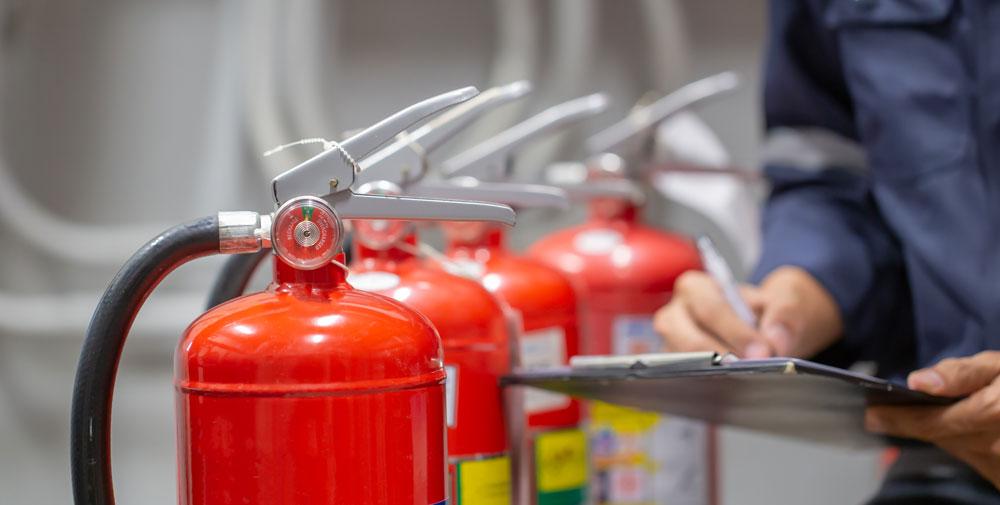The Business Sprinker Alliance explains why it is important to look after your sprinklers.
In an environment where everyone is trying to get value for money when spending, maintenance budgets often get squeezed.
Ultimately a lack of, or inadequate maintenance, is directly correlated with increased expenditures in the long-term, in terms of equipment problems, shutdowns and failure.
This is so crucial for fire protection systems where lives and property are on the line. Sprinkler systems are an extremely effective way of controlling the spread of fire, but like all systems they need to be maintained. If you neglect maintenance for too long, this can have serious consequences and the results can be devastating.
Sprinklers are often unnoticed or underestimated, with people either not recognising their true value and benefits or disregarding them without fully exploring the opportunities they present.
However, automatic sprinklers bring a multitude of positive benefits, ranging from enhancing life safety to safeguarding businesses, ensuring continuity, and promoting sustainability.
With a proven track record of success, the introduction of automatic sprinklers has a significant impact. But when you invest in these fire protection systems, an investment in maintenance is essential.
Fire sprinkler systems are not a case of “fit and forget”. Like similar systems, they need to be considered as part of the emergency response to a fire to ensure that they are maintained in service.
An installed fire sprinkler system is a key part of a building that requires inspection, maintenance, and testing to ensure a high degree of readiness and reliability. If the system is taken out of service for maintenance, then precautions are needed to handle ignition sources and repairs need to be expedited.
As with other fire safety arrangements, they need ongoing assessment to ensure the hazard they are protecting still matches their design. If the hazard has changed then it needs to be recognised, considered and the protection adapted.
While individual sprinkler heads themselves are designed to require no servicing, trained and qualified professionals must periodically check valves, pipes, pumps and alarm components. T
esting ensures open pathways for water to flow, an adequate supply of water, reliable alarms and a system ready to function. Sprinkler systems have demonstrated longevity similar to the life of a building when adequately maintained and cared for.
An ageing system may need some additional care to flush pipelines to ensure they remain free of corrosion and sprinklers heads may need testing as they approach their silver anniversary (25 years of service) to ensure they are still in good working order.
Standards offer helpful guidance
Where a sprinkler system is part of the fire strategy for a building, the property owners have the responsibility to maintain the sprinkler system. In the UK, the system may have been installed to the British Standards BS EN12845:2015 or BS 9251:2021 depending on the type of building.
Both standards offer guidance on the type of inspection, maintenance and testing needed for the systems with helpful breakdowns into time periods to guide the owner.
As noted above, using a trained and qualified professional carrying third party certification for the servicing work is another key aspect to ensure that you are receiving the right advice.
Maintaining reliability
Whilst the importance of regular maintenance and inspections cannot be stressed enough, sprinklers are an extremely effective way of controlling the spread of fire. There is clear evidence that properly maintained sprinklers work. In fact, the NFCC and the National Fire Sprinkler Network (NFSN) have worked together to investigate the effectiveness and reliability of sprinkler systems. In an independent report carried out by
Optimal Economics, thousands of incidents have been analysed to provide a detailed and comprehensive view of the activation and performance of sprinkler systems used to control fire in buildings. The evidence shows that sprinkler systems have an operational reliability of 94 per cent and demonstrate when called to work they have a very high reliability.
Furthermore, it is evident that when they do operate, they extinguish or contain the fire on 99 per cent of occasions across a wide range of building types, according to Efficiency and Effectiveness of Sprinkler Systems in the United Kingdom: An Analysis from Fire Service Data – May 2017.
When you consider the operational reliability of sprinklers being 94 per cent, this leaves 6 per cent of sprinkler systems that didn’t quite work in the way we expect them to. While not all of those are maintenance related, some of them may be.
Change of mindset
Moving forward, there needs to be a change in mindset when it comes to attitudes towards maintenance as has been signaled across the built environment.
Take the analogy of our body and our heart, every now and then we need to give it some exercise to ensure it is in good working order and it needs a physical examination by a professional to ensure there are no issues.
The same is essentially true for a sprinkler system. Just like our bodies, we know we need the exercise and checks, but put them off due to time, fear and cost. We can do similar things with sprinkler maintenance. In both cases we know better that ongoing exercise and checks by professionals provide critical reassurance that we can and will perform when called upon.
Automatic fire sprinkler systems have earned their reputation as a proven and indispensable tool in fire safety. When installed in a building, these systems significantly increase the chances of containing a fire at its early stages, even before the arrival of the fire and rescue service. Prioritising maintenance will ensure these systems serve as a vital lifeline in critical situations.





